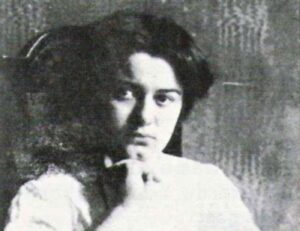There’s one thing we can always count on in a presidential election year: No matter how divisive the issues in his platform, no matter what level of bigotry or criminality he ascribed to his opponent’s voters, and no matter how narrow his margin of victory, the winner will call for national unity and promise to be “a president for all Americans.” Joe Biden said it this year, Donald Trump said it last time, someone will say it in 2024—and every time, it rings hollow. It’s not just that we doubt the ability of individual politicians, even presidents, to accomplish anything; unity itself strikes us as a pipe dream, and promises of unity seem hopelessly nostalgic. They are indeed nostalgic, because we all sense that unity used to be possible. Presidents-elect keep returning to the long-dry well of Kennedyesque “ask not what your country can do for you” rhetoric, because Americans still feel that, a long time ago, we were capable of being less partisan, less individualistic, more interested in our communities and neighbors.
Social scientist Robert Putnam gives some quantitative heft to this idea in his new book The Upswing. He compiles a wide and eclectic set of gauges to tell a story of the rise and fall of American solidarity, from the national level down to the local. His findings confirm that, since the 1960s, social cohesion has been in decline by every measure, from income inequality and the variation of baby names to the founding of civic associations and time spent volunteering. We are more individualistic, competitive, polarized, and isolated than our grandparents were. Putnam makes clear that this trend is not exclusive to one area of American life. In politics, education, economics, society, and culture we are becoming more individualistic. Furthermore, Putnam argues, no single variable clearly leads the others—that is, just looking at the trend lines, no variable Putnam examines looks like a cause preceding the others. We can’t chalk it all up to income inequality or globalization or declining marriage rates.
Americans still feel that, a long time ago, we were capable of being less partisan, less individualistic, more interested in our communities and neighbors.
But it’s not all decline for Putnam. All of his measures of social cohesion were on the rise for the first six decades of the 20th century—this was the title’s “upswing.” Thanks to reform movements beginning in the Progressive era, America began and then sustained momentum toward community for several decades. That upswing brought America from the “I” society of the Gilded Age—which, by all Putnam’s measures, greatly resembled today’s America—to the postwar “we” society. Overcoming the Gilded Age’s competitive ethos required moral as well as political reform.
Start your day with Public Discourse
Sign up and get our daily essays sent straight to your inbox.Social Darwinism served as a justification of the results of ruthless market competition, including the Dickensian squalor often associated with lower-class industrial life, as right and natural. But at a certain point, Americans began clamoring for reform and rebirth. Everything was on the table for possible reform, self and society alike. In Theodore Roosevelt’s words, “no hard-and-fast rule can be laid down as to the way in which such work must be done; but most certainly every man, whatever his position, should strive to do it in some way and to some degree.” With the introduction of the social gospel and the spread of literature on industrial conditions such as Jacob Riis’s How the Other Half Lives and Upton Sinclair’s The Jungle, different kinds of people started to think twice about whether the hard realities of industrial life were just. Not all the motives or results of their reform efforts were good, but inequality fell, secondary education became more widely available, and all of Putnam’s other metrics began their upswing.
Perhaps the most compelling part of The Upswing is how it deals with the standard objection to complaints about the 1960s. Many would argue that increased individualism is the cost, or maybe even the sign, of social progress. The supposed trade-off is that the ’60s brought civil rights and greater equality for women and racial minority groups that was not coming otherwise. We may be more alone now, but more of us are more free. Putnam disagrees. Relying on data on educational and economic outcomes, he argues that the march toward racial and gender equality was well underway before the 1960s, and in fact slowed down as America became more individualistic after 1970. Especially when it comes to race, most of the gains in education and income equality since the Civil War came in the first two thirds of the twentieth century.
There are, however, some issues with Putnam’s method, and for all the novelty of his “metahistory” approach of combining sociological metrics over long periods, they’re the same issues that tend to come up in accounts of our national decline. There’s no doubt that families, communities, churches, and so on are not as prominent in people’s lives as they once were. But we should always be cautious not to take a certain narrow slice of history—say, America during the 1950s —as normative. For someone using Putnam’s method, this might mean over-generalizing a historically contingent trend unique to a single generation of Americans and charting its rise and fall, interpreted as the rise and fall of “we”-ness or “I”-ness. At that point, all you would measure is the ’50s-ness of America over time.
Granted, there are many social measures that are useful across time and context, like marriage rates and inequality of wealth. But one can find other measures that tell different stories about the trajectory of community life in America. And indeed, some of the same barometers for we-ness that Putnam uses, considered in historical context, actually acted as forces for atomization. Consider the “voluntary” or “civic” association, a major point for Putnam in this book and in his previous work. It’s one of those things he sees rising between 1900 and 1960, then declining. One of his “I-we-I” charts depicts “membership rate in national chapter-based associations,” showing a steep uptick in the 1920s and 1940s followed by a plateau and steady decline after 1960; another, “founding dates of 58 major national membership organizations,” peaks in the late nineteenth century before declining.
At face value, it is easy to see how such groups—which could include anything from the Rotary Club to the second wave of the Ku Klux Klan—might represent a generic sense of fraternity. Many of the Progressives Putnam cites did create these organizations, though not always in the interest of greater we-ness; some of these groups were founded with the intention of preserving the privilege of a certain identity group. But other Progressives, more concerned with generating a broad culture of democracy, hoped to push in the opposite direction and encourage deliberation across groups rather than the creation of more groups. The nineteenth century was indeed unequal in many ways Putnam charts, but it also had a number of community-wide activities—tent revivals, community lectures, the use of the public square—that became more privatized and consolidated behind the closed doors of proliferating civic groups as the century went on.
Over the generations, and especially during Putnam’s 'upswing,' American churches have been getting less reflective of their communities, and more dependent on personal preferences and social sorting.
Against the backdrop of broader democratic activities, voluntary civic organizations of the type that reached their height of popularity in the 1950s represented a step toward atomization. Instead of centering the community around institutions—like the public square—where people of different social classes could mingle, Americans increasingly sorted themselves by race and economic standing. This sorting was a reaction against, not a barometer of, we-ness. Fleeing the hubbub of cities and its lower-class families with lots of children, middle-class Americans increasingly segmented themselves off in suburbs and limited family size to a more respectable “nuclear” level. Facing labor unrest and the influx of non-Anglo European immigrants and black workers moving from the south, white businessmen withdrew from the public square and formed exclusive associations.
This sorting trend has been especially drastic in American church life. Over the generations, and especially during Putnam’s “upswing,” American churches have been getting less reflective of their communities, and more dependent on personal preferences and social sorting. Religion very often acted as a social leveler in early America. Alexis de Tocqueville observed that American Catholicism in particular fulfilled this function, subjecting “the man of genius and the vulgar crowd, to the details of the same creed; it imposes the same observances upon the rich and needy, it inflicts the same austerities upon the strong and the weak.” Protestants have always been more segmented, but New England Puritan colonies operated on the conscious assumption of a community-wide covenant, in which the union of church and state implicated everyone in a common project even as they each worked to develop land on the private level.
By the Progressive era, however, observers of American life were noting that churches, though still tightly interwoven with civic life (perhaps even more so than they were in Tocqueville’s day) played the opposite role. In a 1906 follow-up essay to The Protestant Work Ethic and the Spirit of Capitalism, Max Weber observed that turn-of-the-century American Protestants were using their churches as a form of social sorting. Membership in certain churches conferred high levels of social—and consequently, economic—credit, while membership in others did not. American churches were, Weber observed, among the types of increasingly prominent associations that “were the especially typical vehicles of social ascent into the circle of the entrepreneurial middle class.”
Weber took as a matter of fact that other civic associations in America operated the same way and for the same purposes. Two decades later, sociologists Robert and Helen Lynd likewise noted in Middletown, their landmark 1929 sociological study of a small Indiana town, that compared to the 1890s, “economic and social considerations . . . appear to be becoming more potent in marking off one religious group from another.” Socioeconomic sorting of religious believers had become a bigger factor in religious affiliation than doctrine, making differences across denominations appear stronger than they already were: “The interdenominational mingling of an earlier day has apparently declined somewhat with the growth and differentiation of the community, competitive building programs, and national denominational financial burdens.” Though more interwoven with civic interaction and social capital, churches were now a force for social stratification.
Americans proliferated institutions to suit and sort themselves more and more, until eventually they sorted themselves out of those institutions altogether.
It is certainly possible that those observations reflect coexisting functions of churches rather than a historical shift from one to the other. Perhaps Weber and the Lynds were seeing the norm, while Tocqueville’s Catholics and the Puritan settlers had been the exception. But there is no question that by mid-century, American church life had grown even more fragmented. Traditional denominations split into modernist and fundamentalist, and eventually evangelical, branches as controversies over Darwinism and biblical criticism grew nasty. Divergences in church aesthetics and liturgical music styles gave parishioners another way to sort themselves by personal preference.
The 1950s were, by the most basic measures of church attendance, a religion boom—a boom some historians have attributed to the sheer numbers of new churches opening, which made it easier for any given person to find one that suited his or her beliefs and liturgical preferences, not to mention social position and race. Churches, understood as voluntary associations, became so subject to personal preference that the landscape came to resemble a consumer marketplace. The proliferation of these associations reflected not a broader sense of fraternity but the growing role of personal taste.
Imagine taking Putnam’s approach to this phenomenon. If one were to chart the number of churches in America since Tocqueville’s day, it would almost certainly follow the bell curve Putnam sees in everything—growing until around the middle of the twentieth century, and then plateauing and shrinking, perhaps back to pre-1900 levels. That isn’t because American religious life underwent an I-we-I curve but because Americans replaced a common democratic institution with narrower associations based on class, race, and personal interest and sorted themselves accordingly. They proliferated institutions to suit and sort themselves more and more, until eventually they sorted themselves out of those institutions altogether.
Voluntary associations are good to a certain point, and their near-total absence is very likely a sign that something is wrong. But as extensions of individual preference and sorting, they must not be mistaken for community life itself. It is all well and good for people to volunteer, but if half of one’s town is volunteering at the local Planned Parenthood while the other half is volunteering at the local pregnancy resource center, it will not suffice for communal we-ness so long as there remains disagreement over the very personhood of certain members of the community.
A democratic community, one that is not defined by political polarization nor sees itself as the aggregate of autonomous individuals, is one that can find foundational unity in what Pope Pius XI called the necessary societies of family, polity, and Church. Only those societies can reliably assert the basic value of those who otherwise go ignored or are deemed socially inconvenient. If we want unity in America, we at least need the most basic areas of life not to be subject to individual preference, market-style competition, or social sorting. There must be some place where we stand on truly equal footing, and some experiences like worship, parenthood, and public deliberation, where all can participate regardless of how competitive and individualistic the rest of the world may be.












